ULTRAVOX founder member Billy Currie is the classically trained maestro who declined a place at London’s Royal Academy of Music in order to follow a dream of becoming a rock musician.
He was also in TUBEWAY ARMY when Gary Numan made his first TV appearances on ‘Old Grey Whistle Test’ and ‘Top Of The Pops’ in 1979, as well as being part of ‘The Touring Principle’ concert extravaganza.
Although ULTRAVOX have released 11 studio albums since 1977 with John Foxx, Midge Ure, Tony Fenelle and Sam Blue as front men, the instrumental constant on synthesizers, piano, violin and viola throughout has been Billy Currie.
Although his most high profile period was in the Midge Ure fronted incarnation of ULTRAVOX, this might not have happened had Currie and Ure not met while working together on VISAGE; together with Dave Formula, John McGeoch and Barry Adamson from MAGAZINE, the project had been instigated by Rusty Egan to produce synthesized dance music fronted by Steve Strange to play at The Blitz Club where he was the resident DJ. Along with Numan keyboardist Chris Payne, Currie and Ure co-wrote VISAGE’s biggest hit ‘Fade To Grey’.
The classic hit line-up of ULTRAVOX featuring Billy Currie, Midge Ure, Chris Cross and Warren Cann reunited in 2009 and released a new album ‘Brilliant’ in 2012 before winding down after a tour with SIMPLE MINDS in 2013.
Since then, Currie has been busy with his solo work, the most recent of which was 2020’s piano-based long player ‘The Brushwork Oblast’; it was released as part of a new deal with Burning Shed who will also reissue all of Currie’s solo back catalogue on CD.
Billy Currie kindly chatted to ELECTRICITYCLUB.CO.UK over a game of Vintage Synth Trumps and chatted about his life and brilliant career in music.
These Vintage Synth Trumps cards we are using are made by GForce and you’ve worked with them haven’t you?
Back in 2003, GForce asked me to do some programme signature tunes for the ImpOSCar, since then I’ve had a relationship with them where they give me synths. Recently they asked me to look at the beta of stuff like the Oddity3. Dave Spears of GForce introduced me to Dina Pearlman of The ARP Foundation, she is doing an online “Synthposium” on 5th November and talked me into being involved, I’m one of people on the panel with Dave *laughs*
This is like Brian Eno’s Oblique Strategies but with synths, when you were working with him on the first ULTRAVOX! album, did you use the cards during the creative process?
We talked about the idea but I don’t think we did… but then again, a few things happened in the studio while I wasn’t there! It’s a very distant memory that they might have *laughs*
I do remember us talking about how we should “change the atmosphere” if we got stuck, like “do this” or play football in the park, just to change things because we’ve all got a little bit blocked. Music is a thing that changes if you want to get spiritual or spacey about it, you can’t control it and all of a sudden, your frame of mind changes.
How did you find working with Eno?
It was great, I remember the first meeting in one of these slightly hippy-ish rooms that was clean but rough-matted. We’d finally signed our record deal after me doing a bum job in a warehouse for 3 years and rehearsing 4 nights a week and on Sundays… the other guys were cleaning toilets! *laughs*
Anyway, Eno walked in… I was a massive fan of ‘Here Come The Warm Jets’ and I was aware of his Obscure label, that was like “wow”, we were connected to something really special. Because we were label mates at Island and Island looked after Obscure, I could take these albums home for free. I was really taken aback by him and it was nice to sit on the floor and talk. It was a good vibe and I remember in the studio, him having his Minimoog in one corner so we were thinking DI a little bit… that was quite new to me because we were very much “a band” and I realised “oh, you can just plug a keyboard into the desk”.
It was friendly but I was knocked sideways a bit by working with him. There was a piece that me and John Foxx wrote together called ‘Slip Away’, I wrote a piece of music that he liked and then he connected it with a song that he’d written. So it went into my music with a minimalist feel to it before my mesmerising grand piano which was very classical. I was very proud of it and we laid it down like we had in rehearsals. It was like I was finding my sound because it was greys into black, that was the feeling, a bit like ‘Rage In Eden’, put a bit of reverb in it and the beautiful sound made you tingle.
So what’s the story about what happened in your absence?
While I was out of the studio, mischievous Brian Eno and Steve Lillywhite changed it and upset the applecart. Eno got his Minimoog out and on the minimalist syncopated spacey bit, he detuned that, like he’d got his destroy mode in. And when it came into my keyboards which are still in there, he did this beautiful colourful Minimoog sound that copied my top piano line and let the echo go into the next bit. So he was breaking the rules, it must have seemed a bit stiff to him what I did, so I felt he was trying to mess it up a little bit. Even at the end, there’s that “woo-woo-woo” echo coming through from that initial bit.
I wasn’t against any of it, I was finding my feet at the time so it blew my mind, but then I felt it was very colourful and I just accepted it. I mean we were going forward and we had Brian Eno producing us! But the idea of a producer was a little bit “hang on a minute” at first, I like to be in control, we were all like that, John was too but he had opened up himself to be produced which in a way, you’re kind of manipulated in some ways.
You’ve got to remember Brian Eno didn’t do that much on this debut album. But he was a lovely man and came in with this lovely food and these fantastic girlfriends, usually Swedish and that was very nice *laughs*
Were these sessions with Brian Eno the first time you were formally introduced to synthesizers?
When I was 19, I was in a band that didn’t get anywhere. I’d been coming towards keyboards in that band but they only had a Hammond organ which wasn’t my kind of thing. Our tech guy Vince had a flat in Willesden and one of the band’s that would come round to him to get their gear fixed was HAWKWIND, that was fun watching them! They brought in this oscillator box with two little joysticks on. Vince let me have a play so I sat there with headphones lifting the sound up and down, it was very basic but it had a big effect on me.
I had a go on a Mellotron in 1971, I was working with a singer songwriter called Jeff Starrs. Our manager Mark Plumber who worked for Melody Maker knew Kit Lambert who managed THE STRAWBS and we did a support gig with them. They invited me to their studio to get a demonstration of the Mellotron, Blue Weaver did it for me, a very lovely guy. This was so I could play it on Mark’s wife’s song. I produced the song and played Mellotron on it. This was in Pye Studios near Edgware Road and very state of the art at the time. Mark’s wife did not get a release with her songs. It was a fascinating experience for me though. The string sound was so unforgiving. It felt like I was sticking sellotape on the track, no touch sensitivity. It was powerful though and certainly lifted the track. It is a pity it wasn’t mine and Jeff’s music I was working on.
So the real first time was Brian Eno’s Minimoog with his funny little paintings to describe the sounds. He knew he’d blown my mind and he showed me some things that were fascinating. For the end of the album, John Foxx had the idea of ‘My Sex’… I didn’t do the synthesizer on that, I did the piano but I was watching Eno and loved the way he did the simple harmony and from that, I could see how powerful synthesizers were and that stayed with me. I like complication as well but I do love simplicity. And when Eno did another melody, exactly the same but using a major third above, I was like “F*CKING HELL”! I used to love doing that with sustained guitar like in ‘Lonely Hunter’ working with Steve Lillywhite, you would feel it in your heart. This was similar but in a different way because the sustain was on the Minimoog and you would put another harmony on the sustain, and that would be very powerful.
You got onto string machines as well?
On our demos for our first album, like ‘Dangerous Rhythm’, I was hiring things like the Elka string machine. I did try other string machines like the ARP Solina and I was like “UGH! DON’T WANT!”, the vibrato wasn’t right with my idea of strings and don’t forget, we were spending our own money then. But when I got the Elka Rhapsody, I was blown away so that’s why it’s used on ‘Dangerous Rhythm’. So that was the beginning of these melodies cutting through, I always had a problem with keyboards not cutting through in a loud band as ULTRAVOX! was at the time with the punk and new wave period.
This is interesting because what you say Eno did seems to contradict what he says about himself being a non-musician…
It was musical, but quite simple. I think Eno was pulled along a bit with us… going from major to minor, it’s not something I would have done because it was a bit bluesy, but I loved it. But yes, it was quite classical but there was dissonance inside ‘My Sex’ because he also did a another synthesizer counter-melody which goes right through it and you get this great clash which is a B Natural against a B Flat, so he was enjoying that was well. He would have seen that I was a classical musician but he knew I was in the middle of trying to create my own thing, so probably held back from completely destroying it *laughs*
So the first card is an ARP Solus, of course you are one of the main exponents of the ARP Odyssey… how did you come across it?
I was thinking about all of this, especially with the thing I’m doing with Dina Pearlman, it was a bit of luck really. I’d had a go on Eno’s Minimoog and Chris Cross hadn’t bought his one yet, that was later before ‘Systems Of Romance’. I didn’t like the look of the Minimoog with the board in front of you because I was such an egoist, I didn’t want anything covering my body *laughs*
When I was playing live, I was very aware of the physical thing, I was imagining playing it stood up and what it would look like. Someone on the grapevine suggested the Odyssey and said it was really pokey which is what I wanted. I was suffering from not having a proper piano, I didn’t like the Wurlitzer or the Fender Rhodes because they were too jazzy. So I ended up with an RMI which sounded like a piano but had this horrible sustain constantly and kept getting lost in the mix, so I wanted something that would cut through.
None of this was cheap though?
Island were throwing some money at ULTRAVOX! so we got the Odyssey and an electric Fender violin, it was just the luck of the draw and we got a good deal. But it was quite expensive, so some of the sh*t we got from the punk people was probably deserved. At first, I thought I’d made a big mistake… there was this book and these silly cutover pages to put over it to show you where to position the sliders. I tried the strings setting of course and that was laughable and then woodwinds but eventually, I told myself to stop being so cynical. I was a classical musician but I’d kicked a lot of that stuff to touch! I didn’t want to play something that sounded like a clarinet or flute!
I wanted to express myself, I’d been able to do it on the violin but it didn’t really work in a rock band because of the lack of development in the amplification of it. The Fender violin did cut through but the pick-up used to feedback and we got complaints! While practicing at home, I had this woodwind sound on the Odyssey but I may have made a mistake and it had this vibrato on it. So I had to check where it was coming from, I looked to the left where the portamento was and it was the LFO. I went “I like that” and it got wider and wider and wider. But the mathematic process of it of being exact started to appeal to me… so if you pushed it forward and it would go up, then down, push it a bit further and it would go wider. So it was doing this “wow-wow-wow-wow” thing which I thought was really good.
I was trying to work out why this machine was expressive, this was amazing and something else! I had vibrato on the violin and viola, it’s what I liked so I was drawn to this. I’d learnt violin and viola from the age of 11 and looking back, what I did with the ARP was the same, I needed something for my soul to express myself. I just loved how expressive it was.
I was also learning about the voltage control oscillator and voltage control frequency in the middle; I knew if you brought them down, you got this thing where the sound would come in from the top and then down through like ridiculous, it would blow your ears apart!
That would have been mad!
I used to do that on stage in the ‘Ha! Ha! Ha!’ period and you could see people wince! I would have other wacky things like in the middle section of ‘Artificial Life’, just playing completely ad-hoc, weird aggressive stuff that was reminiscent of ROXY MUSIC. It was a case of playing live and working through the process.
That would later change because I would bring these two sliders in the middle close together to be a softer sound, not so harsh. I found a way to with two fingers to slide between the two sliders with my right hand… it didn’t have touch sensitivity but doing this, I would make something like the verse of ‘Vienna’ sound, like it was touch sensitive by bringing the amplification up a bit and you could turn your other finger to bring the frequency up. It would go “woah-oooh” with a bit of filter on it!
After ‘Ha! Ha! Ha!’ and ‘Systems Or Romance’, I learnt certain things that I really liked for that Billy Currie sound that I got to working with Gary Numan in 1979, then VISAGE and the solo on ‘Sleepwalk’. But that was finding a sound that would cut through. You’ve got to remember that the late 70s was very volatile, if you did a gig, it was very over-the-top, very loud and very crazy as the punters were very vocal and mad. It was nice to know you were being heard! I think I fell for the rock and roll thing a little bit, trying to be as loud as possible! *laughs*
Are you a frustrated guitarist in a way?
Not really, but I did play the guitar but I’ve never really had that desire. It was the first thing I learnt with my cousin David coming over. I was always fascinated by the guitar, it was why I wanted to be in a band in the first place, listening to things like SPIRIT ‘Mechanical World’, what blew my mind was the effects on the guitar, all that phasing and flanging.
During the pre-ULTRAVOX band TIGER LILY, in the Kings Cross rehearsal room someone left an acoustic guitar. I picked it up and played it doing this spacey finger picking and John Foxx was giving me that look of “oh, he’s a clever sod!” *laughs*
When Robin Simon joined ULTRAVOX, we messed about with pedals, I was always excited by the guitar with Midge as well, and I always loved the sound he used to get.
The next card is a Korg Mono/Poly…
That’s a bit contradictory! I don’t know that one…
Have you used much Korg stuff?
I’ve used the Korg M1 in 1987-89, I didn’t use it that much. It felt a bit like with the Roland D-50, it was sold on the first two preset sounds but when you tried to get into it, I found it rather unfriendly, the sounds were very clunky. I did use it when I was doing the HUMANIA album but I found it a bit limiting because you were more like a computer programmer doing all the increments, it was the start of all that kind of stuff. I should have been used to it but I never was, you had this on the PPG which came out in 1982. All this increments stuff to change the sound? I was used to knobs and sliders.
When I was working with Tony Fenelle for the ULTRAVOX ‘Revelation’ album, when I went on the road, I bought this big Korg 01/W Pro X with a nice weighted keyboard action and 88 chunky keys. That ended up being the MIDI master keyboard in my studio. I used it on three tracks I wrote in 1995, ‘Sisters & Brothers’, ‘Leap’ and ‘Quiet Words’ which are on ‘The Keys & The Fiddle’ album, those weird piano sounds. But I replaced it with the Yamaha CP300 in 2009.
Korg has had an interesting part in my life, but not that creative somehow, I wasn’t getting enough crazy creativity from them.
You mentioned the PPG, what interested you in acquiring the Wave 2.2?
Good question, that was just looking for new stuff and we would have got it just before the ‘Quartet’ album, we bought a Waveterm with it as well… God! It cost a fortune and could feed a country!! *laughs*
What was the PPG system like to use?
I loved it and it was still eccentric so it was exciting, we used it on the ‘Lament’ album as well. I can zoom in straight to a track called ‘When The Scream Subsides’.
There’s a bit in the chorus, that’s a PPG and I’m quite proud of that but if you solo it, the thing is falling to bits, there’s all sorts of stuff going on but what comes through is this creamy bright sound. You could go mad trying to work it, you would play it in the studio and you’d like that sound.
So it was all PPG in the solo of ‘When The Scream Subsides’, that was the height of the ‘Quartet’ album for me, that crisp metally sound… I remember doing that and the late Geoff Emerick who engineering went “Nice one!” *laughs*
The 40th anniversary of ‘Quartet’ has just happened, how do you look back on the album?
Yeah, it was excellent, I enjoyed doing it, it was great working with George Martin and Geoff Emerick, such great people and John Jacobs who often never gets mentioned, me and him used to stay in Air Studios until 4am.
Then there was tour that came with it featuring the huge ‘Monument’ stage set and that massive keyboard set-up…
It was a bit crazy! *laughs*
It was really good, I was trying to get natural distortion of out the ARP Odyssey and that’s why I took to the OSCar when it appeared because it had that overdrive like natural distortion. Chris Huggett came up with it, he’s sadly no longer with us…
Is it true Chris Huggett designed the OSCar with you in mind?
Yeah! He came to show it to us while we were making ‘Lament’, “Sound 1” and what a big ego trip I was on, was based on my ARP solo sound with that slight overdrive to it. On the ‘Quartet’ tour, it was very over-the-top, I got two Martin bins with three-way crossover as my own PA. My hearing is ok but I had to lean in on the right when I was playing the ARP because that ear is not as good as the left. There were people complaining because it was so directional that they could hear only me! *laughs*
Did you actually use everything on stage?
It was a ridiculous set-up then but the biggest keyboard set-up I got was on the ‘Lament’ tour…. there was my usual but on my left, I had a Yamaha GS-1, CS-80 and the PPG but then when I turned around to the back, there was a Prophet T8 and a Yamaha DX7 on top of that… I never actually played it, it was just something to look at! *laughs*
When Chris Huggett came in to show us the OSCar, three of us bought it and they got used. Midge learnt how to use the sequencer for ‘Love’s Great Adventure’ and Chris would do some basslines with it, but we were quite critical as it wasn’t as heavy as the Minimoog. When we were doing the ‘U-Vox’ album, our famous end of (*big laugh*), he came down with his salesman Paul Wiffen and they showed us this thing that was like the Emulator, but the company all went a bit tits-up when they overdid it and went bankrupt so it didn’t happen.
Going back to the 1979 Gary Numan tour, Chris Payne mentioned that although you had tons of keyboards, several were spares?
In ULTRAVOX, there weren’t many spares but I did have a spare ARP; however if the GS-1 went down, we were absolutely knackered and we didn’t have a spare CS-80. But I remember with Gary, he made sure that there was a spare Minimoog.
On ‘The Touring Principle’, you did what many have cited as your best ever solo on a cover of ‘On Broadway’…
Yes, it was good, it was an opening… when Gary said we were doing ‘On Broadway’, I thought it was quite wacky and sounded pretty wild, I sort of just fell into it. We started writing, a combination of me, Chris Payne and Gary, I was holding down chords on the Yamaha SS-30 string machine as he was singing. There was an arrangement vibe going on and it just came about. I was always up for a solo so I might have just got ahead and done it, I was at that point then.
It was showing a bit of ‘Systems Of Romance’, like the solo on ‘Slow Motion’ but I wasn’t being let loose there. Here, I wasn’t so entrenched so I probably initiated it myself. Chris related to the arrangement so when Gary stopped singing, I would have gone onto the ARP and him onto the Polymoog with that ‘Cars’ vox humana sound.
I said “Right, that ends in F sharp major, when I start the solo on the A, we change to minor” and Gary was like “YUP!” because it was like ULTRAVOX. But Chris’ big chords were pulled back so that you could hear me, especially because he is also classically trained and a better keyboard player than me, he went much further at college on piano, I only went to Grade 4 *laughs*
I haven’t heard it in ages but I was still learning about the ARP Odyssey then… at the side of it, there was this octave thing that dropped it two bloody octaves so you had to get used to that. If you didn’t want to drop down, you’ve got to play on a different place on the keyboard, otherwise, you get lost. If you wanted to drop two octaves, then you stayed where you were.
It is a magnificent bit of playing…
I can remember building the solo and it went round quite a while, it was such a buzz live because that was the first time I’d ever got to that level of theatres. I stayed down with that whirring, that was the unison thing between the two oscillators, you played on one of them while they were in unison and you’d turn the octave switch back to normal and go up two octaves. I added a bit of portamento as well which worked and was bang on, that was lucky. But I’d learnt to do portamento, so it came right up to the note at the beginning of the bar.
But cutting to the chase, I used a bit of that solo in the middle of the solo in ‘Astradyne’. I thought “I really like playing that” so that’s why that bit of ‘On Broadway’ ended up in there, but you wouldn’t really know, It was just great fun, I loved it. I was always this kind of person who wanted to be pushed out right to the front, which is why I was never happy being the viola player, even as a lead in an orchestra, it was never enough for me. I can play in the middle of a group and look at what’s going on arrangements, but I always have to have a moment right out front. John Foxx realised that because you’ve got to be careful when you have a personality like that in a group who can p*ss people off! *laughs*
I was lucky when the next line-up came together because working with Midge, he knew what kind of person I was because we’d worked together in VISAGE, so I had to be let loose. It was the same with Midge, he was the kind of guy who could stay a bit back which was really good, and he’d accompany me nicely on the keyboards and guitar, those nice Strat guitar chords. And of course, he had his time at the front with his guitar.
You used a bit of the end of ‘On Broadway’ on a solo track called ‘Matsang River’ from ‘Accidental Poetry Of The Structure’ which has just been reissued on Burning Shed, are you signed to them or are they licencing your material?
It’s a label run by musicians for musicians founded by Tim Bowness, so they know how het up we all get when we see a contract put in front of us, heart attack material and fights for months! So they don’t do that at all, it’s a gentlemen’s agreement. I like it and that’s that, we split everything equally, 50/50. So far it’s been working really good and I just like the people.
That ‘Matsang River’ thing, I was going to call that ‘Off Broadway’ but I thought that would be too obvious. I called it ‘Matsang River’ because I was interested in the Tibet problem with China.
When I finished that ‘On Broadway’ solo, I got into a Rick Wakeman position of playing the ARP and leaning across to the right and playing something on the Yamaha SS-30 string machine at the same time… I used to like doubling melodies and even on our first ‘Old Grey Whistle Test’ playing ‘Hiroshima Mon Amour’, I was doing that, playing two keyboards. I did a bit of playful ad-lib before it ended so I thought why not just use that.
So with this solo album reissue series, are you going in reverse chronological order? Like when is your first solo record ‘Transportation’ likely to come out again?
About 2052! *laughs*
We are going backwards but I am looking forward to reissuing ‘Transportation’. I will be doing ‘Still Movement’ next week when I’ve done my VAT!
‘Airlift’, the opening track on ‘Transportation’ is like “Yes, I’m free! This is me and this is what I can do”, was it an emotional release after the ‘U-Vox’ debacle?
It’s nice to hear Chi that you’re picking up on that, I know it’s a bit obvious but it was a long time ago. So yes, that’s what it was and it’s got some nice PPG on it, that has a nice roughness about it. The piano is a Technics PX-1…
Didn’t you use that on the ‘U-Vox’ tour? *laughs*
Yeah! You remember that! Did it not sound so good? *laughs*
I didn’t think the Technics was as good as your Yamaha piano…
… that’s because it didn’t have that natural string expansion… yes, it was a bit trite sounding, I hung onto it but got rid of it when those nice little boxes that you could MIDI to your keyboard came out, I used one of the ‘Unearthed’ album.
With ‘Airlift’, there’s a whole raft of keyboards. The solo at the beginning was a jazzy brass thing like a soprano sax, that was played with the first Akai 8-bit sampler, not even 16 bit! It was great to do that album, MIDI was a big thing there, I had the Prophet 2000, ULTRAVOX’s old Waveterm, an Oberheim, I’d be linking 3 or 4 sounds together, it what you did at that time.
I did start a solo album in early 1983 which I had to abandon when we took the ‘Quartet’ tour to America, it later made up what became ‘The Keys & The Fiddle’…
The next card is an EMS VCS3…
EMS, yes Chris Cross had one around the time of ‘Systems Of Romance’; it was the Synthi AKS with the blue touchpad keyboard and he used it for basslines before he had the Minimoog. It was troublesome to keep it in tune, so that was 10 out of 10 for tenacity for doing that. I particularly remember it when we went over to America when he was let loose with that, he never knew quite what was going to be coming out of it, a bit like an Eno gig.
There was a track called ‘Radio Beach’ which we played but never recorded, Chris loved chaos more so than me, I would be playing this sound on the ARP to this glam beat, the Americans seemed to love it. At the end, Chris would set his AKS free so there were all these crazy sounds. There was also ‘He’s A Liquid’ and ‘Touch & Go’ which John Foxx later recorded.
So ‘Touch & Go’ and ‘Mr X’, were they basically the same song that went into two directions?
Yes, we rehearsed at a studio in Kingsway and recorded ‘He’s A Liquid’ and ‘Touch & Go’ playing them live. I knew that John was going to record them both which annoyed me a bit because that’s how things were. But I knew he was not the type of person who would get into litigation, so if he was going to record ‘He’s A Liquid’ which I did write a bit of, especially that descending bit in the middle, then I thought I’d have the melody from ‘Touch & Go’ which I didn’t write much of. I knew he wouldn’t do anything about it because me and John got on, he understood me and I understood him. It was lucky but we just didn’t want to go down that route. It was also good how he let the ULTRAVOX name carry on, not mentioning other people who wouldn’t let it carry on! *deep laugh*
How involved did you get with the recent ‘Rage In Eden’ boxed set and the Steve Wilson remixes?
I fully got involved with Dermot James at Chrysalis, they are doing a great job and he is very thorough. He wanted me to go up to Steven Wilson’s studio to go over a few things, like ‘The Ascent’, Dermot had done his homework and knew I’d written it. I must admit, I was a bit nervous about it because I’m not always that good at getting right involved in something from years ago.
You’ve got this thing where it’s almost like opening up ghosts. But there’s another side to me which is adventurous. Steven Wilson lives near me and is a nice guy, he has a lovely studio. I sat and watched what was going on there as it was going through Logic. I saw what he was doing with ‘The Ascent’ and he kept my original piano which I was pleased about. I thought it was interesting the way he accented the theme and I knew from the music he does that he would be quite interested in certain things like that and ‘Stranger Within’ where Chris and Warren came up with something that was just odd in 10/4 time.
I know he’s into weird time signatures with his band PORCUPINE TREE so with ‘I Never Wanted To Begin’, I’m sure he really related to that because there’s a mad bit where I stubbornly carry on playing in 7/4 time with the violin until it meets up again on the first of the bar. Amazingly, Chris Cross played along with me musically on that one and did the ringing using a Roland sequencer. Steven Wilson will have got off on that and he did a good job, he’s not afraid of working with a violin.
Where did you see Steven Wilson’s approach as being different?
He put some space and air in places that never should be there like ‘The Thin Wall’ because it’s all very tight and controlled on our version with Conny Plank. I let go as well because it’s the second one, I was a little bit concerned when he did ‘Vienna’ but once you get through the first one, it’s OK.
We did have a bit of a mix-up because there was a version of ‘I Remember (Death In The Afternoon)’ he wanted to call work-in-progess. It was not but I came round to it as it was a rough mix that Conny had knocked up on 2 tracks that had this middle section that I wrote and I wanted to hear the keyboard parts. I backed off because I understand it’s interesting for ULTRAVOX fans to hear it now as a work-in-progress. I remember thinking “f**king hell, it’s driving me nuts!” because it sounded wrong… when you make an album and keep hearing something that’s wrong, it has an effect on you, I’m very sensitive. You’re pushing through to accomplish your art, to get it past the winning post. That was the only thing I got bothered about but it is what it says, a work-in-progess.
Staying on ‘Rage In Eden’, what was it like working with the late Conny Plank because ULTRAVOX did 4 albums with him?
Yeah, it was good working with Conny Plank… a lot of people forget he did the ‘U-Vox’ album, he actually came over to London and he stayed at my house in Notting Hill. The guys from KILLING JOKE came round while we were working, he was at the desk with a big joint! *laughs*
My last memory of him was saying goodbye to him in Montserrat, I drove him to the airport after the ‘U-Vox’ mixing. But it just didn’t seem right because our relationship was very strained, George Martin turned up and I think Conny was a bit under-the-cosh. He wasn’t happy, he didn’t like the SSL desk and he actually recorded some compression on the vocals of ‘All Fall Down’ which was a terrible thing to do. Conny never did that so he obviously wasn’t in the right place, we tried to remix that track. Then he went off to do that tour of South America with Dieter Moebius where he was playing Flugelhorn, he had been practising at my house and I loved it.
I actually love wind stuff, in my first band, I was playing with a sax player who also played viola. I actually got some nice sax sounds on the ARP which was instigated by Conny. Of course, they’re not real sax sounds, I wouldn’t do something so naff but the bite of it fitted in with the music like ‘Someone Else’s Clothes’ and ‘Some Of Them’ on ‘Systems Of Romance’, doing it in duophonic which had a natural distortion and was very interesting…
There’s a bit in the middle of ‘Astradyne’ where the phrasing is quite saxy…
Yeah, we were doing all these things with synthesizers, you’d make it up as you go along. Instruments exist but the synthesizer doesn’t really, it will do what it bloody well likes! *laughs*
Conny would be wide open to stuff like that, he knew exactly how to place it in the mix. I mean I wouldn’t really know but he was right tuned in there, just like when we did ‘Dislocation’. All I did was get the little box and plug it in with a sequencer and we used a clock CV from ‘Just For A Moment’; the bass drum had carried on and on and on with nothing else on so that pushed my basslines along, Eventually when the drum clocked it along, it did that powerful unsettling phrase, you can hear some really ad-hoc stuff in there where I’m making the notes by moving the slider. It’s Conny, he just got hold of it and made the echoes when John did the vocal. I remember blowing Gary Numan’s mind when I took a white label to play it at this Bowie night we were at…
How would you describe your relationship with Conny?
My relationship with Conny was very much in the fact he knew what we were doing and he was right in there, making it happen. He was psychic in a way because he was one step ahead of us when we were coming up with stuff, thinking of how it was going to work out and laying it in with everything else.
I couldn’t cope too much with stuff like talking boll*cks in the kitchen, I wasn’t very good at that and I just wanted to get on with the music… he knew me like that, but I was definitely someone you could trust. We didn’t particularly do anything sociable together even when he was staying over at my house, it was kept to business. But I don’t think he liked any other studio apart from his own near Cologne.
His head wasn’t good over in Montserrat and I think it might have been the first signs of him not being very well. He was a lovely guy, I don’t think I ever had any rows with him… but he might have made a few noises to get me to shut up sometimes if it looked like one might brew up, to remind us that we were at his place.
Time for another card and it’s the Roland Jupiter 8… now I know you were an Oberheim man, so out of those polysynths, why did you opt for an OBX rather than say, any of the Jupiters or the Sequential Prophet 5?
I liked the Prophet 5, Dave Formula had one and we used it on the ULTRAVOX B-side ‘Paths & Angles’… after that, I don’t know why I didn’t use it more. The Roland, I messed about with it but I never went down there. I liked the Oberheim, I got the sounds that I used on ‘Rage In Eden’ quite quickly, there was just some character about it which I found really eerie and quite pokey.
I remember when Chrysalis sent us the 24 track masters, it was quite mind-blowing to hear Midge’s isolated vocals on ‘Vienna’ 40 years later, that was quite interesting. But there’s things like on ‘Accent On Youth’ where the Oberheim slides up into the verse, it was so f*cking loud but Conny knew how to fit it in, now that’s good mixing! I was lucky to find that sound from the Oberheim which comes into the instrumental on ‘Accent On Youth’ and then ‘The Ascent’ which sounds like an Eastern European choir, that deep “doo-doo, doo-doo-dooh”… when I listened to it, I was like “F*CK OFF! THAT’S JUST AMAZING”, I just love it and yet when you listen to it, it’s almost a bit tacky but because you can hear the sharpness of it, it sounds like male voices. I also like the solo sound that I got for the end of ‘We Stand Alone’. It had good character but it took me a while to get into it.
I later got the Matrix 12 as well, but it didn’t fit with my head, it was all the dials and everything. I sometimes used a programmer Mel Wesson on the ‘Transportation’ album. I also used the Oberheim on the ‘U-Vox’ tour to bring some crunch into it as I was using a stack of DX7s in the TX816 modules.
Talking of male voices, how did reversing the tape of Midge from ‘I Remember (Death In The Afternoon)’ for that really eerie chorus of the ‘Rage In Eden’ title track come about?
That was excellent, it was Midge on a roll there. This was how confident we’d got by then, this was our moment, I thought “I haven’t got anything to do on this!” and the rest of the band just looked at me like “f*cking hell”. Midge came up with most of it but of course Warren and Chris were getting their stuff together. I think Midge just suggested the idea to Conny or maybe Conny suggested using a tape backwards.
It just fitted with the feel of the song, especially alongside Midge doing his Strat anthemic kind of thing, he had a way of hitting it so that he didn’t hit it too hard, it was a style he came up with, it’s not heavy.
Another card, it’s the Korg MS-20, DAF used one of these connected to a Korg Analog Sequencer on the classic stuff they did with Conny Plank like ‘Kebabträume’…
There was a lot of stuff coming out then so you’d do your own little thing because it was expensive, we only really started throwing our money around in 1981. Things were developing each month for things like that and you’d do it all different ways. HEAVEN 17 would do it a different way, talking to Martyn Ware, they’d have their own bag of tricks and keep it to themselves.
I had an ARP sequencer which I used on VISAGE ‘Blocks On Blocks’, it’s a great sound when you put it in octaves.
Talking of VISAGE, the 40th anniversary of ‘The Anvil’ happened in the Spring and some of your most underrated work is on that, I love ‘Again We Love’ and the instrumental ‘Whispers’…
‘Again We Love’ has got that middle section I did, I listened to it a few years ago, it’s got the ARP in there, after the “again we love” bit, there’s that Minimoog doing the thudding in there, it was like “yeah, we love that!”; we were also using my Roland drum machine on that album which had been doctored by our tech guy Pete Wood, I sold it to Rusty Egan.
We’d just done the ‘Rage In Eden’ album so my memories of doing ‘The Anvil’ aren’t that good because I was tired and I knew Midge was tired as well, so there were efforts to avoid friction on that album because we were so knackered. We’d had a holiday so I’m not complaining but to take on another album was really quite something! *laughs*
I have fantastic memories of ‘Whispers’, I had a lot to do with that one… we were wrapping up the album and I wrote it right near the end. I enjoyed working with John Hudson, he’d sussed out this CS-80, that melody was really nice, it was the heart pouring out…
‘Whispers’ is a track of yours that no-one talks about but it is brilliant…
Oh, thank you very much.
What about the ARP Odyssey solo on ‘The Anvil’ title track?
Oh, that’s not me, that’s Dave Formula… he had an ARP Odyssey but our sounds were very different, that’s very Dave. It was great working with him, he was so off the wall because he’s from a jazz background.
So when I wrote ‘The Damned Don’t Cry’, our faces were against to wall to come up with another ‘Fade To Grey’. So Dave did this off-the wall middle section, he was an exceptional keyboard player. He was big on the CS-80 and Prophet 5, he did the middle section of ‘Blocks On Blocks’ as well.
We gelled very well. One of the points we loosened up was when we did the backing track of ‘Night Train’. I came up with the chorus, I loved soul music when I was 15-16 and I’d heard Midge come up with some funk and soul on ‘The Horseman’… I was in the studio and I was like “what the f*ck’s he doing now?”, I thought he’d lost the plot as we were so tired… but then I was thinking “I like this”.
So was ’Night Train’ almost jammed?
Once I did that brassy chorus of ’Night Train’, before I knew it, everyone was getting round me like Barry Adamson on bass and Rusty… it’s great to play drums with Rusty, it’s very different to playing with Warren, can you imagine the atmosphere in the place? *laughs*
Often in a studio, you are just messing around, trying to get a sequencer to bloody work, so when ‘Night Train’ was coming together, I’ve just got this memory of being in a different band, the way we just slowed down a bit, went into the chorus and sped it up. There was no code, it was real time. If you listen to ‘Night Train’, it speeds up and slows down. When you’re working with a great bass player like Barry, you just know because he’s nodding and pulling silly faces, it was just so much fun to work with him, such a lunatic *laughs*
Then John McGeoch came up with a sax part and it was great to have that on, but ‘Night Train’ went into a bit more normal VISAGE in the middle eight which was Midge’s contribution, it pulled it back into being more European.
I get the impression that on ‘The Anvil’, there was more of a willingness to experiment with funkier ideas that weren’t possible to incorporate in ULTRAVOX?
Yeah, you wouldn’t do it in ULTRAVOX, but there was some frustrations creeping in a little bit. I came up with ‘I Remember (Death In The Afternoon)’ and while we were rehearsing, I wanted something with a bit of a swing to it, a bit like Steve Miller ‘Abracadabra’ because I like dance music, and Warren was like “are you having a laugh?”. It had such a hooky melody, I felt it could swing to make it more dancey but that didn’t come off and I was happy with what we ended up with. Two-thirds into ‘Rage In Eden’, you do then realise it was the right direction. But I had to be careful, Midge was on my page a little bit, we didn’t want to do anything too naff, thinking we could do soul and funk.
Another story and I’m digressing a bit here, but I remember when we went on the road, Tony Thompson from CHIC and John Taylor from DURAN DURAN came over to check me out about getting involved with this project that would have Robert Palmer singing called THE POWER STATION. I was given a time and a rehearsal place to come to, but I was in the middle of the ‘Lament’ tour and I didn’t turn up! *laughs*
Of course, the song you had with ‘Dancing…’ in the title, you couldn’t actually dance to it! *laughs*
If you analyse it now, dance to that? You’d need a pair of clogs and some sticks holding you up! *laughs*
I used to want some more dancey stuff but it went tits up in VISAGE because of that! Midge eventually left because Rusty got in this American producer John Luongo to remix ‘Night Train’. I liked it but Midge cut himself off and walked out, that caused a few ructions because I didn’t.
VISAGE was a bit of a knock-up, sometimes I forgot that because I loved it so much. But let’s face it, if you gonna get involved in it after an album from ULTRAVOX like ‘Rage In Eden’, you’re not going to just mess about are you? Otherwise you wouldn’t do it. I may have got a bit more involved than I intended to but I liked the move towards a more soulful thing.
One thing about ‘Dancing With Tears In My Eyes’ was it got me checking out Michael Rother ‘Sonnnenrad’ which inspired it…
I know this sounds a bit arrogant, but ‘Dancing With Tears In My Eyes’ wasn’t very hard to do for me, it was quite easy. In 1983, we were searching for a new direction and the atmosphere in ULTRAVOX wasn’t very good at all. So we were trying all these different things and I was taking a bit of a step back from writing which was unusual for me. I saw what experimental stuff was coming out and I wasn’t into the band much, I was hanging on by the coat tails really. So I thought I would go right ahead and do something which I knew the fans would love, because they would recognise it as vintage ULTRAVOX, almost going backwards and going against the grain.
At home, I had a Boyd mini-grand piano art-deco thing, that sounds a bit fancy but it was the 80s… Conny had given me this album he produced, ‘Sterntaler’ by Michael Rother. That melody on the opening track ‘Sonnnenrad’, it was very relaxing and pleasing, it was just nice … no hassle and I came up with this other thing that was doing fourths resolving to a minor which was very Michael Rother, but then the scale came right up perfectly in thirds. Then you start doing things that are quite German. I’d got used to doing this from all the touring I’d done.
So I appeared in rehearsal with this thing and Midge was like “thank f*ck you’re doing something”… I’d got the arse because I wasn’t happy with things, what had happened in VISAGE was dragged into ULTRAVOX so he was very much “bring it on!”; before I knew it, he’d got a nice feel with the guitar and quickly got the verse and it was like “Sh*t, here we go! It’s a hit!”
The way Midge went into that verse, he did a great vocal… I walked into Mayfair Studios when he was singing that and I thought “F*cking hell! He’s thrown the kitchen sink at that! Well done my son!”; I mean, after all the aggro and bad atmosphere, you’ve got to get releases and he must have doubled it about 36 times!
Final question and I’m interested because I am descended from Hong Kong immigrants, but is ‘White China’ on ‘Lament’ about the 1997 handover of Hong Kong to Communist Red China?
Yes, I think it was; I was a bit naïve and didn’t discuss it with Midge then because it really wasn’t a good time, and I thought if he was going to delve into politics, it wasn’t a good time to discuss that either. It was unfortunate but sometimes when bands work so intensely together, it doesn’t seem appropriate to ask questions, we’d always worked on this assumption that we’d get our own meanings for ourselves out of the lyrics. In the 80s line-up, it was never “it means this”; my interpretation of ‘White China’ was about Hong Kong being taken over by the British to sell illicit opium… when countries change like that, it does make you think, how does it end? It’s not good now how China is trying to make Hong Kong like the mainland, it’s a difficult situation.
What about ‘White China’ musically, it sounds like you were listening a lot to ‘Blue Monday’ by NEW ORDER!! *laughs*
Yes, it did a little bit, that was a new drum machine we’d got, the Sequential Drumtraks. Midge got that dancey triplet thing going on but ‘Lament’ was such a strange album, I don’t want to make a big deal out of it but it wasn’t a pleasant experience…
…in retrospect, the ‘Lament’ album sounds three-quarters finished…
Yes, I think it was, really we weren’t getting on too well. We might have done some more tracks if we had been! But I did like that rhythm on ‘White China’, it’s funny to think about it now because when it was being played through Warren’s monitors, that verse and the hi-hat, it sounded great. I remember Warren’s mad crew guy, he was an absolute lunatic jumping around to it! *laughs*
ELECTRICITYCLUB.CO.UK gives its sincerest thanks to Billy Currie
ULTRAVOX ‘Rage In Eden’ has been reissued as 40th Anniversary 5CD + DVD audio deluxe boxed set by Chrysalis Records, available from https://ultravox.tmstor.es/
A selection of solo works by Billy Currie is available on CD via Burning Shed at https://burningshed.com/store/billy-currie_store
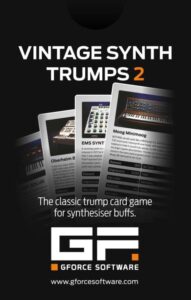 ‘2022: A 50 Year ARP Odyssey Synthposium’ takes place on Saturday 5th November 2022, details at https://alanrpearlmanfoundation.org/fall-synthposium-2022-a-50-year-arp-odyssey/
‘2022: A 50 Year ARP Odyssey Synthposium’ takes place on Saturday 5th November 2022, details at https://alanrpearlmanfoundation.org/fall-synthposium-2022-a-50-year-arp-odyssey/
https://www.facebook.com/profile.php?id=100057882589562
https://open.spotify.com/artist/14sHnYweMuHQ3UH4f5UmOa
Vintage Synth Trumps 2 is a card game by GForce Software that features 52 classic synthesizers and available from
https://www.juno.co.uk/products/gforce-software-vintage-synth-trumps-2-playing/637937-01/
Text and interview by Chi Ming Lai
14th October 2022

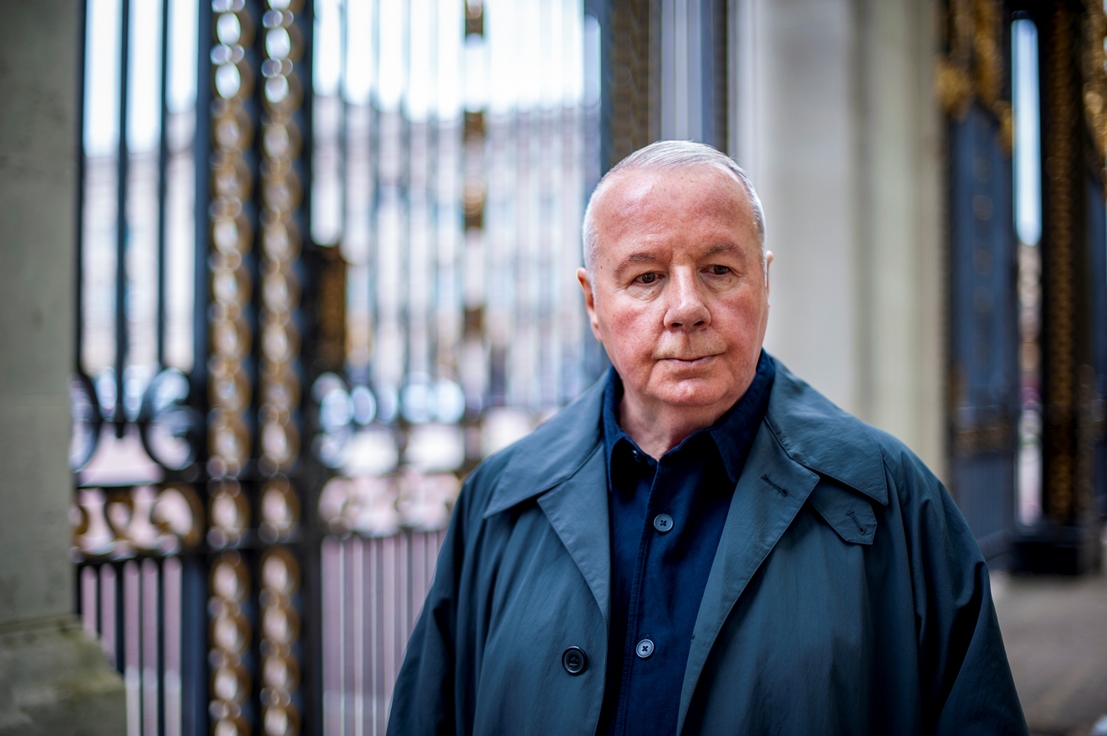
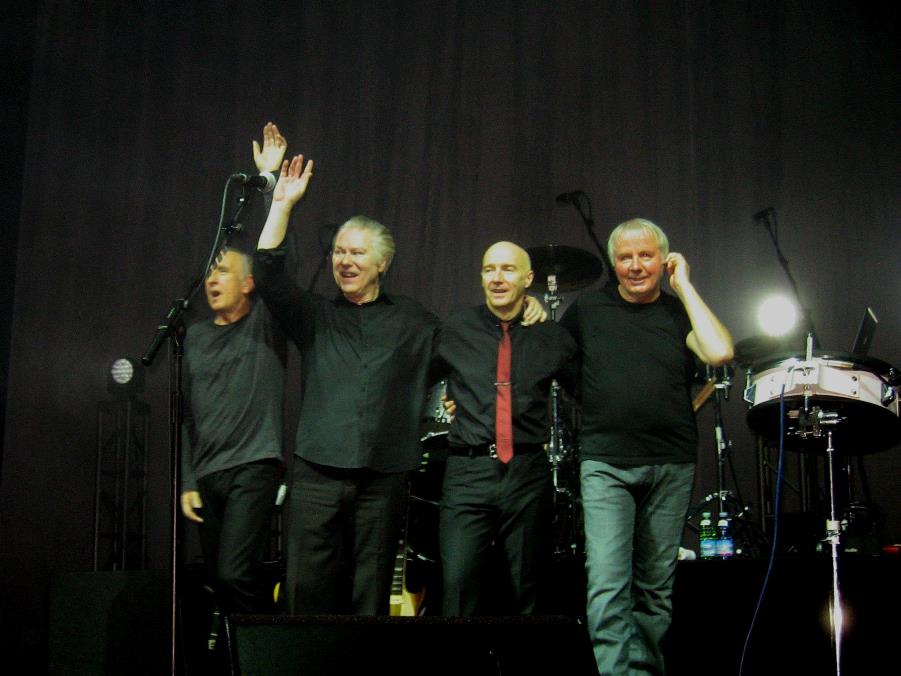
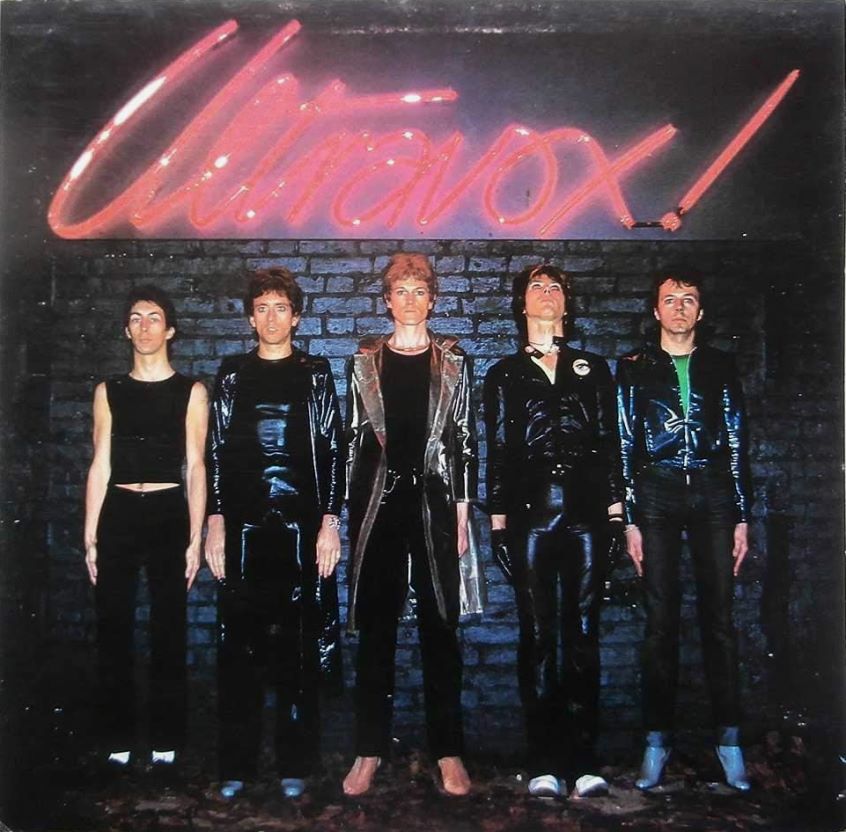
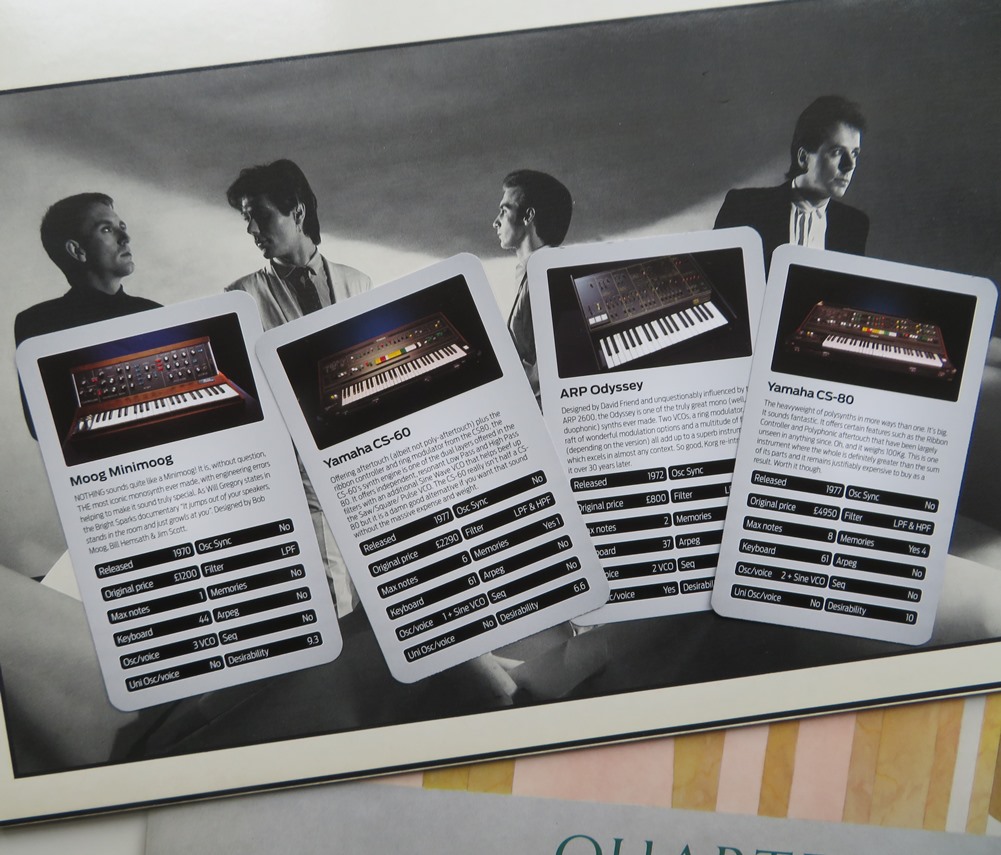
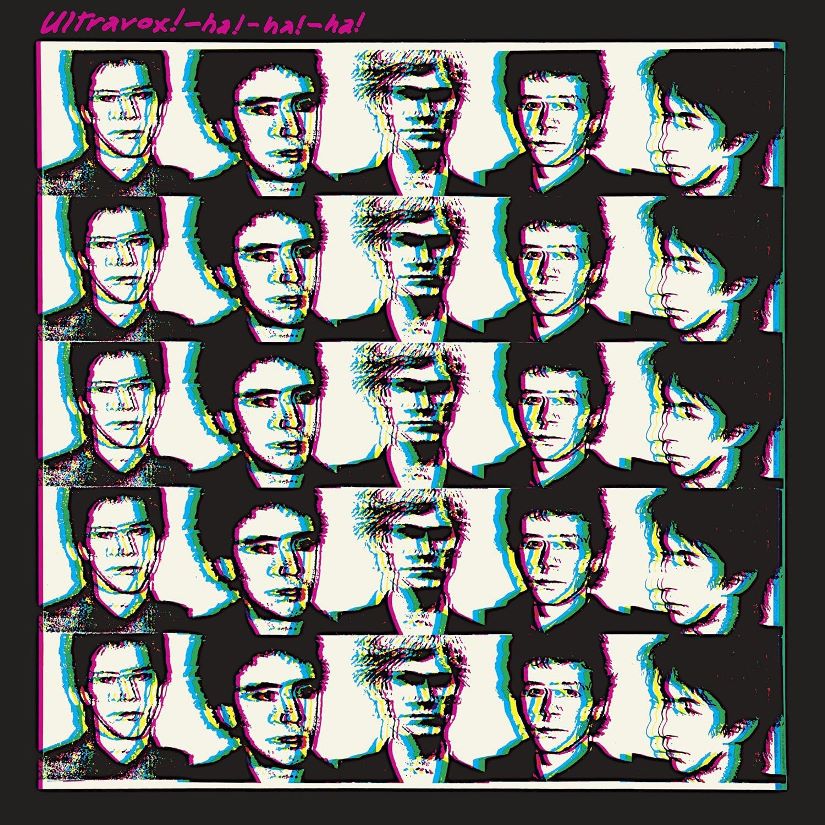
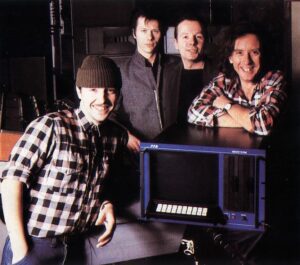
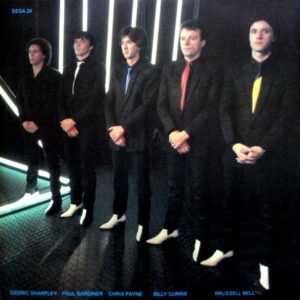
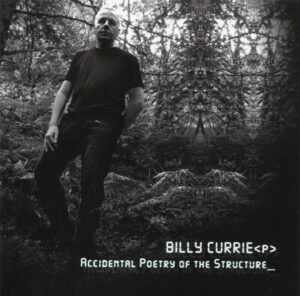
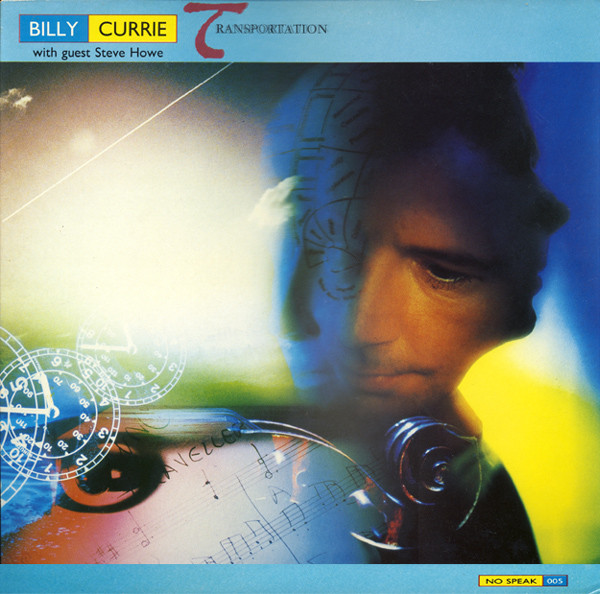
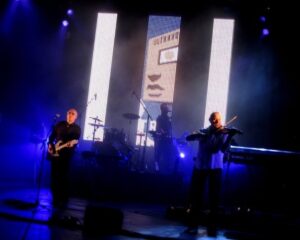
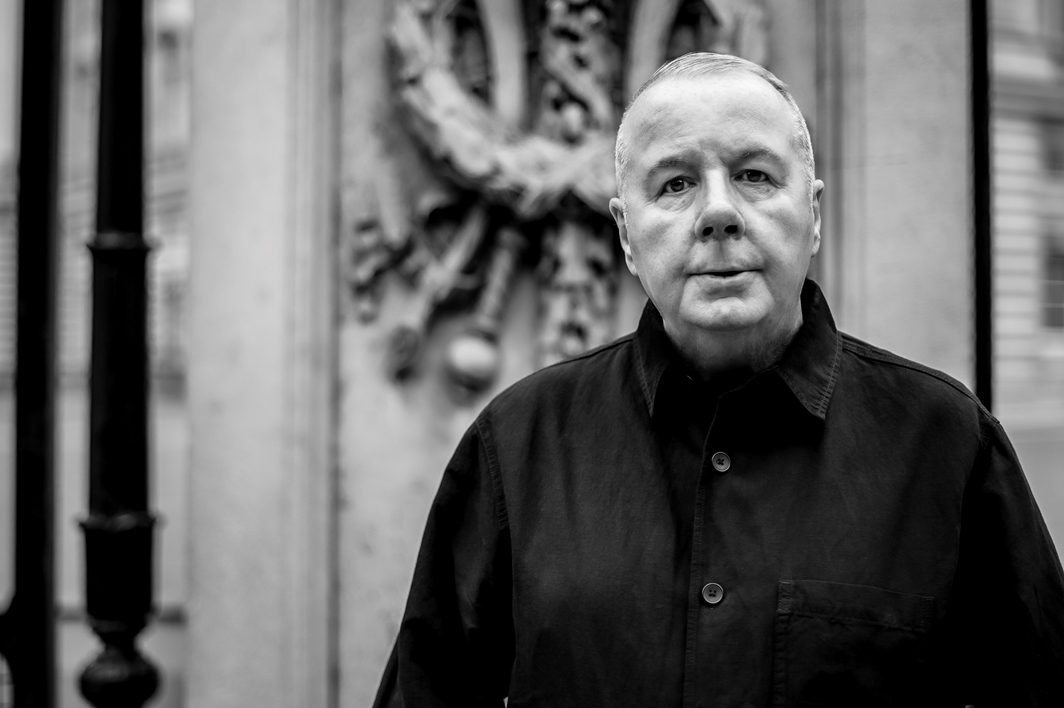
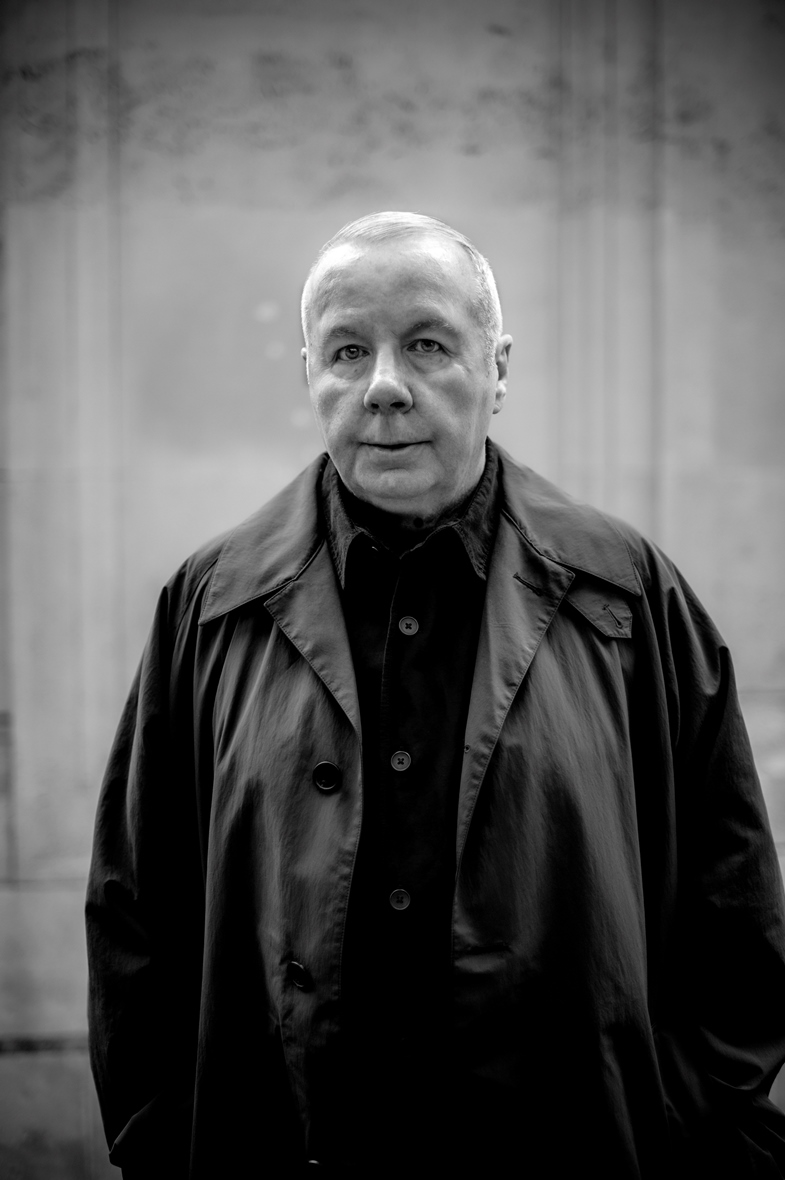
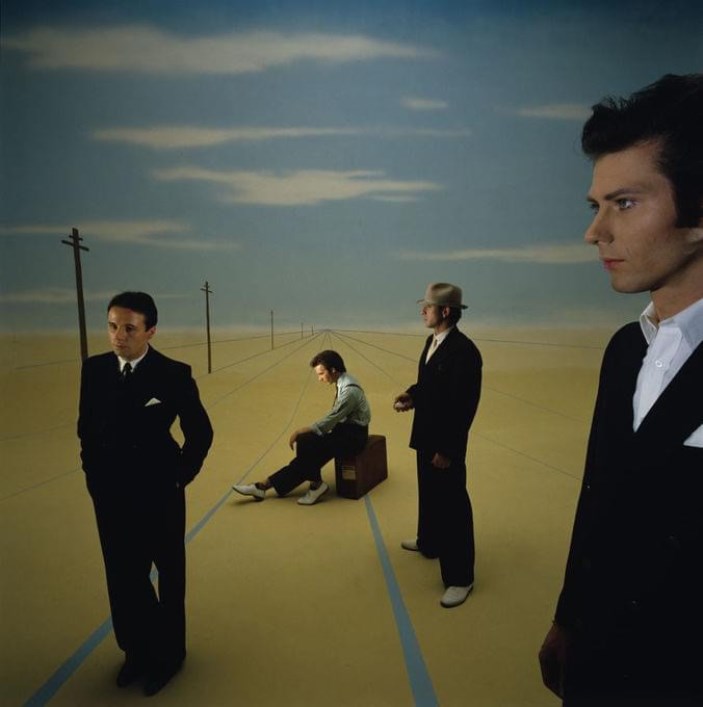
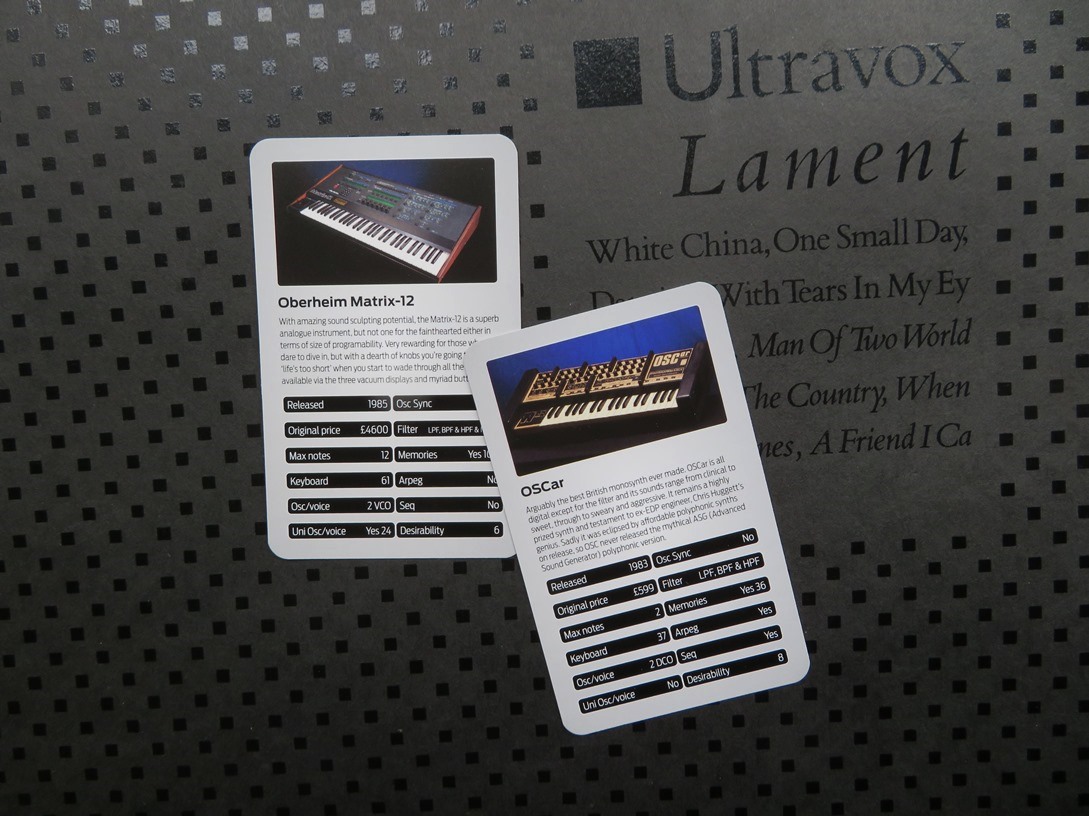
Follow Us!